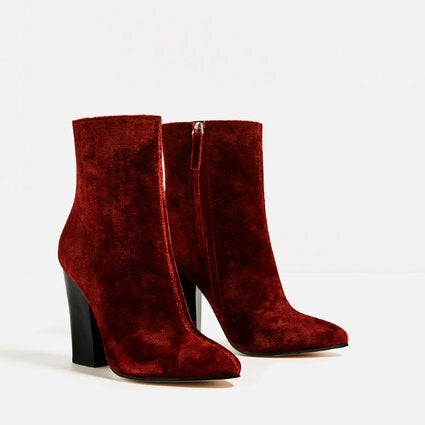In August I bought my fourth pair of Doc Martens. One pair I still have, one pair was on its way out and the other had long since deceased, having succumb to the afterlife following several Toronto winters and the wrath of city salt.
So last week, I tried breaking the new pair in. And as I sit here, sipping tea and typing, I can confirm that breaking in Docs is a hell I’d wish only on my worst enemy. And also myself, because I love them.
And so do a lot of people, obviously. Despite the fact that some of us weren’t allowed to wear them during their mid '90s second-prime (memories of grade four, hello), Docs have successfully maintained a place on the aesthetic landscape since their mid '60s inception, somehow morphing into the ideal footwear counterparts to at least one fashion sect over the last 50 years. But why?
Docs in the '60s.
Officially — as in, it’s what’s written on the official website — Docs are a boot that "stands for something." (Cool!) They suggest individuality and rebelliousness, which is a big deal considering they got their start as an early-1900s work shoe before evolving into a mid-century answer to a broken foot and eventually the eight-holed style that were soon embraced by British punks and fellow champions of working class vibe.
In short: Docs quickly became a mainstay of youth culture, embedding themselves in protests and festivals through the '80s and '90s before getting an overhaul in the noughties and reinstating their fashion currency. Whew. But, like ... still, why?
Docs in the '80s.
Counter-culture is essential in establishing a sound fashion landscape — in that every trend should be challenged, every "rule should be ignored, and every safe and accessible piece should garner a direct (and opposing) response. At least by someone. If we were to blindly digest every mainstream trend handed down to us, we’d not only look boring, but interesting fashion (nay, art) would cease to exist.
We’re not supposed to dress the same. We’re not supposed to like the same things. The designers we remember most fondly are those who violated the rules we’d grown accustomed to (see: Alexander McQueen) and made us uncomfortable with their tenacity for risk-taking and rejection of the status quo. And Docs help anchor that.
Actress Alicia Silverstone in Dr. Martens, circa the '90s.
When Docs became the go-to of the punk, grunge, and alternative scenes in the '90s, they were in direct opposition to the decade’s affinity for miniskirts, bright colours, platforms and OTT femininity. So, we saw the likes of Courtney Love and Liv Tyler invert those trends by pairing baby doll dresses, florals and kilts with the hardness of combat boots — a shoe formerly reserved for men, and a shoe that was a far cry from the delicacy that defined a huge part of the aesthetic norm. Which is the role they’ve continued to play, even as we’ve begun to challenge gender roles.
Ultimately, Docs have become the fastest way to assert yourself as a person whose style allegiance is rooted in the other — even though 2016’s expanded to include everything, ousting the outdated mandate of "us versus them."
"The designers we remember most fondly are those who violated the rules we’d grown accustomed to and made us uncomfortable with their tenacity for risk-taking and rejection of the status quo. And Docs help anchor that."
And of course, from a practical standpoint, Docs make sense. In the winter — typically the Canadian ones that wage war on boots and our general spirits — they’re non-slip and easy to walk around in.
But above that, they’re boots that have been assigned their own link to the alternative. They’re rooted in the idea of not being like everybody else. They’re hard, they’re loud, they’re aggressive. They aren’t soft or cute or girly. Plus, like Converse or Vans, they transcend the notion of trends entirely because of their longevity over decades.
And yet ironically, despite their counter culture associations, their consistency makes them safe. You can wear them with anything while avoiding falling into the it-look death trap. And that’s a big deal, especially when you think about how many styles of everything are available, how quickly they turn over, and how so many of them are recycled from the '60s or '70s and especially '90s — but without the cultural roots Docs have grown along with. And that makes them special — which is why we still care.
Plus, they look awesome with everything. And while breaking them in is a hellish prison worse than death, goddamn it, it’s worth it. Or at least that’s what I’ll be telling myself when I wear them again today.
Also on HuffPost
